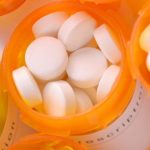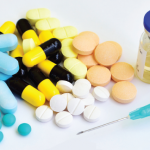(Reuters Health)—Many drugs granted accelerated approval by the U.S. Food and Drug Administration (FDA) lack clear evidence of safety and effectiveness, and the same is true for most high-risk medical devices, according to two new reports in JAMA, online Aug. 15.
The Accelerated Approval pathway makes potentially promising investigational medicines available for use before the usual amount of data has been collected to confirm their effectiveness and safety, Dr. Huseyin Naci of the London School of Economics and Political Science tells Reuters Health by email.
“Drugs granted Accelerated Approval should be rigorously evaluated using convincing patient-centered clinical outcomes in rigorous studies,” Naci says. But, he addd, “We have found numerous situations in which required confirmatory studies with rigorous designs and outcomes are not pursued or are not completed in a timely fashion, and in these cases, we are concerned that regulators appear to accept data that would not otherwise meet FDA standards.”
Naci’s team analyzed the FDA’s accelerated approval of 22 drugs for 24 medical conditions.1
For standard approval, the FDA generally requires gold-standard randomized controlled trials (RCTs) that demonstrate a drug’s safety and effectiveness. Fourteen of these accelerated approvals, however, were exclusively based on less-rigorous trials.
Given the lower standard of evidence, the FDA required 38 more trials after approval to confirm the benefits of these drugs. Three years after approval, though, only 19 had been completed. Eleven more were underway and said to be on schedule, six others were delayed by more than 12 months, and two had been discontinued.
Most of these later trials still used outcomes that would not be acceptable for standard approval, and several studies failed to show a benefit or were terminated early.
For the 10 approvals that finally met the requirements established by FDA, the time to do so ranged from one to five years after the accelerated approval.
“Our findings suggest that expediency in drug development and approval can be successful, but that drugs approved via the shorter route to market are rarely subject to tests, even in the post-approval period that use established and clinically meaningful outcomes,” Naci says.
When the FDA approves medicines via its Accelerated Approval pathway, he notes, the agency should clearly specify the data limitations and how required confirmatory studies are expected to compensate for these limitations.
A second report from Dr. Rita F. Redberg of the University of California, San Francisco, and colleagues paints a similar picture for high-risk medical device supplements, which are required for any change that might affect safety and effectiveness. These always require clinical data.2
“We expected to find generally high-quality evidence to support these changes, because these devices are important to health, and many are implanted and are difficult and/or dangerous to remove,” Dr. Redberg tells Reuters Health by email. “We were surprised to discover that relatively few studies were randomized or blinded, which means that it is not known if the device was better than an alternative treatment [or better than no treatment], and whether any purported beneficial effect was actually due to the well-documented placebo effect of procedures and devices.”
She notes, “In addition, we were disturbed to find numerous discrepancies between the number of patients enrolled and the number of patients with data reported, indicating that there is loss [or incompleteness] of data evaluated by the FDA. This raises concerns about missing data and selection bias.”
Of the 78 supplements studied, 71 were supported by a single clinical study, and half of these studies enrolled 185 or fewer patients. Information about age and sex was lacking for many patients.
One in 12 studies did not specify the outcome they were measuring, and studies that did specify the outcome typically left some patients out of the analysis, including one study that didn’t analyze the results for 91% of the patients.
“I think the public assumes that medical devices currently on the market, particularly high-risk devices, have been approved based on a high standard to show safety and effectiveness before doctors can recommend and implant them,” Redberg says. “Our findings show that this assumption is often incorrect.”
“The public should understand that the standard of evidence for device approval and modifications is not high and is lower than is generally required for drugs, which is two randomized controlled trials,” she says. “Patients may wish to discuss the evidence for any particular device with their doctor as part of the informed consent discussion of risks and benefits of any recommended device.”
Dr. Robert M. Califf from Duke University School of Medicine, Durham, N.C., who wrote an editorial related to these reports, told Reuters Health by email, “I do not believe this needs to be high on the list of public concerns, but it is a motivation to examine how we generate evidence about the risks and benefits of medical products, and how we come to understand comparative risks and benefits. The system has come a long way, but it has a ways to go.”3
“People should ask their doctors about the evidence for drugs and devices being prescribed or use, and they should support research and participate,” he says. “In addition, they should encourage their doctors to participate; too many doctors just ‘go with the flow’ rather than demanding high-quality evidence about what they are prescribing and implanting, and actively joining into appropriate clinical trials.”
Dr. Walid Fouad Gellad from the University of Pittsburgh, in Pennsylvania, who recently wrote about accelerated approval and expensive drugs, tells Reuters Health by email, “It’s important for the public to know that the FDA already has a process in place to make it easier to approve drugs that fill a substantial medical need—the FDA already does this. This report shows that in cases of accelerated approval, many drugs are approved based on studies with fewer than 200 people, using designs which don’t even compare the drug to placebo or some other drug.”
“Another major take-away is that many of the so-called confirmatory trials that are meant to prove the efficacy of these drugs are not confirmatory at all—they show a benefit on ‘surrogate’ outcomes but not on the clinical measures that often matter to patients, like quality of life or overall survival,” he says. “This is important because these medications, approved based on small studies, cost big money.”
Dr. James D. Chambers, an investigator at the Center for the Evaluation of Value and Risk in Health, Tufts Medical Center, Boston, tells Reuters Health by email, “I don’t think that the study’s findings should be interpreted as the FDA letting unsafe drugs on the market. What is concerning is that a key aspect of the accelerated approval pathway is not being fulfilled, which could have potentially important consequences for patients taking these drugs.”
He says, “If confirmatory studies are not carried out correctly (with clinical outcomes) or in a timely manner, then one has to question the appropriateness of the FDA granting Accelerated Approval in the first place.”
“Certainly, it seems that the public should wonder why the FDA does not have greater authority to ensure not only that confirmatory studies are performed in a timely manner, but also that they are designed to confirm a drug’s safety using clinical outcomes, not surrogates,” Dr. Chambers says.
References
- Naci H, Smalley KR, Kesselheim AS. Characteristics of pre-approval and post-approval studies for drugs granted accelerated approval by the U.S. Food and Drug Administration. JAMA. 2017 Aug 15;318(7):626–636. doi: 10.1001/jama.2017.9415.
- Zheng SY, Dhruva SS, Redberg RF. Characteristics of clinical studies used for U.S. Food and Drug Administration approval of high-risk medical device supplements. JAMA. 2017 Aug 15;318(7):619–625. doi: 10.1001/jama.2017.9414.
- Califf RM. Balancing the need for access with the imperative for empirical evidence of benefit and risk. JAMA. 2017 Aug 15;318(7):614–616. doi: 10.1001/jama.2017.9412.



